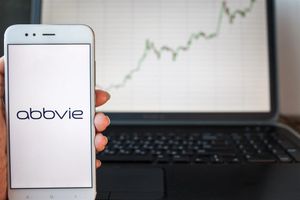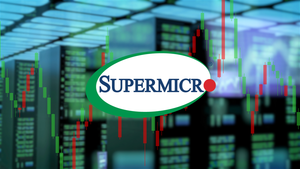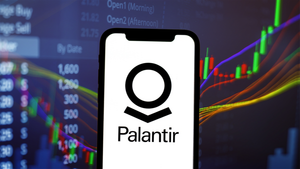
Sunrun (NASDAQ: RUN), a prominent player in residential solar, recently achieved a significant milestone, reaching a new 12-month high on October 7, 2025, with its stock trading at $20.25. This impressive performance signals robust investor confidence in the company's growth trajectory and sends a ripple of optimism throughout the broader renewable energy sector. The surge reflects a market increasingly recognizing the long-term value and expanding potential of clean energy solutions, particularly in the residential solar market.
Sunrun's Ascent: A Detailed Look at the Milestone
The journey to this 12-month high has been marked by strong operational performance and positive market sentiment. Sunrun's stock had previously touched $20.02 on October 1, 2025, before consolidating and then breaking through to its new peak of $20.25 on October 7, 2025. The immediate market reaction was overwhelmingly positive, characterized by substantial trading volume exceeding 5 million shares. This upward movement was not an isolated incident; on August 7, 2025, the stock had already surged over 33.55% following promising advancements in green energy solutions and an exceptionally strong Q2 earnings report, which surpassed both revenue and earnings per share estimates. Notably, a significant jump of over 8% occurred after an upgrade by Jefferies, underscoring growing analyst confidence. Key stakeholders involved include Sunrun's management, who have successfully navigated market complexities and driven innovation, as well as institutional and retail investors who have increasingly bought into the company's vision and financial performance. This sustained positive momentum suggests a favorable environment for residential solar installations and a validation of Sunrun's strategic initiatives in expanding its customer base and service offerings.
Market Ripple Effects: Winners and Losers in the Renewable Energy Landscape
Sunrun's impressive performance, particularly its focus on solar-plus-storage solutions, sends clear signals across the renewable energy sector, creating both opportunities and challenges for various players. The company's Q2 2025 results, showcasing a 9% year-over-year revenue increase and a remarkable 70% storage attachment rate, validate the strategic shift towards integrated energy solutions.
Potential Winners:
- Other Solar Installers (especially those focusing on solar-plus-storage): Sunrun's success provides a blueprint and boosts investor confidence in other installers adopting similar integrated solar and battery storage models. This validation can translate into increased capital access for expansion and innovation. Smaller regional solar installers or national competitors that can adapt and scale their solar-plus-storage offerings are particularly well-positioned to benefit from this rising tide, as market acceptance for energy independence grows.
- Battery Storage Providers: Sunrun's high storage attachment rate directly fuels demand for residential battery storage systems. The broader residential energy storage market is projected for significant growth, with a compound annual growth rate (CAGR) of 13.2% from 2024 to 2034. Companies manufacturing residential battery storage systems such as Tesla (NASDAQ: TSLA) (Powerwall), Enphase (NASDAQ: ENPH), SolarEdge (NASDAQ: SEDG), LG, SunPower (NASDAQ: SPWR), FranklinWH, Qcells, and Sonnen are poised to capitalize on this expanding market, driven by increasing electricity prices, grid instability, and policy incentives.
- Inverter Manufacturers (especially those producing hybrid and smart inverters): The shift towards integrated solar and storage necessitates more sophisticated inverter technologies. Hybrid inverters, capable of managing both solar PV generation and battery charging/discharging, and smart inverters with advanced monitoring and grid interaction capabilities, will see rising demand. Manufacturers developing these advanced solutions, which align with the solar-plus-storage trend championed by Sunrun, are likely to thrive.
- Virtual Power Plant (VPP) Technology Providers/Aggregators: Sunrun's strategic positioning as a "grid-enabling energy platform" through its Virtual Power Plants (VPPs) demonstrates the viability and economic value of aggregating distributed energy resources. This highlights a growing market for companies that provide the software, control systems, and aggregation platforms necessary to manage these distributed assets, offering new opportunities for grid optimization and stability.
Potential Losers:
- Traditional Utilities: The widespread adoption of residential solar, especially with battery storage, reduces homeowners' reliance on grid electricity. This can lead to decreased sales and revenue for traditional utilities, challenging their centralized generation and distribution model. As more customers generate their own power, utilities may face pressure to adapt their business strategies or risk raising rates for non-solar customers, potentially accelerating grid defection.
- Fossil Fuel Companies: The growth of residential solar, as a key component of the broader renewable energy transition, directly displaces electricity generation from fossil fuels. As homes and communities increasingly shift to solar, the overall demand for fossil fuel-based electricity diminishes, putting long-term pressure on companies whose primary business is supplying fuels like coal, oil, and natural gas for power generation.
Broader Implications for the Energy Transition
Sunrun's achievement of a 12-month high carries substantial weight for the broader renewable energy sector, serving as a powerful indicator of the accelerating global energy transition. This milestone is not merely a corporate success story but a reflection of deep-seated shifts in technology, regulation, and consumer demand that are reshaping the energy landscape.
The company's strong performance, particularly its record 70% storage attachment rate in Q2 2025 and its role as the largest provider of residential battery storage in the U.S., underscores the explosive growth in the residential energy storage market, projected to triple in value with a CAGR of 13.2% from 2024 to 2034. Sunrun's ability to dispatch 340 megawatts of peak power during a June 2025 heatwave, preventing blackouts in several U.S. regions, vividly demonstrates the utility-scale impact and grid resilience offered by distributed residential energy systems. This fits squarely into the trend where clean power surpassed 40% of global electricity generation in 2024, with solar consistently being the predominant source of new generating capacity added to the U.S. grid since 2021.
The ripple effects extend to competitors and partners. Sunrun's scale and market leadership provide it with a significant advantage in navigating market transitions, potentially leading to increased market share, especially as smaller competitors might face capital constraints. Strategic collaborations, such as its partnership with Ford (NYSE: F) for vehicle-to-grid solutions, highlight pioneering energy initiatives that differentiate Sunrun. While the overall market has seen a positive uplift, with other solar companies like SolarEdge (NASDAQ: SEDG) and First Solar (NASDAQ: FSLR) experiencing surges, the sector also faces headwinds. Proposed changes to the Investment Tax Credit (ITC) in a U.S. House budget bill, for instance, could impact future installations, though Sunrun's strong foothold in leases and Power Purchase Agreements (PPAs) could mitigate some of these effects.
Regulatory and policy frameworks remain critical drivers. Sunrun is actively navigating uncertainties surrounding the Inflation Reduction Act (IRA) and potential modifications to the ITC. New guidelines from the Treasury Department and the IRS concerning clean energy credits have historically ignited market interest and boosted investor confidence. Conversely, changes in state-level net metering policies or new tariffs on imported solar components could diminish the value proposition for homeowners or increase operational costs. Historically, the renewable energy market, particularly solar, has experienced boom-and-bust cycles, with periods of dramatic growth followed by volatility, often tied directly to policy support or its withdrawal. The recent rally in solar stocks, including Sunrun, in late June and early July 2025, reaching an 8-month high after a less-negative-than-feared reconciliation bill from Congress, further exemplifies this strong correlation between policy and market performance. This historical context suggests that while Sunrun's current high is significant, the future trajectory of the sector will remain highly sensitive to evolving policy landscapes.
The Road Ahead: Navigating Opportunities and Challenges
Sunrun's recent 12-month high casts a spotlight on the exciting yet complex road ahead for both the company and the broader renewable energy sector. While the momentum is strong, driven by global decarbonization efforts and increasing energy demand, significant challenges related to grid integration, policy uncertainty, and financial hurdles require strategic adaptation.
In the short term, Sunrun is well-positioned to capitalize on the continued demand for home solar solutions, fueled by escalating electricity rates and environmental consciousness. Its robust Q2 2025 financial results, with a 9% year-over-year revenue increase and a record 70% storage attachment rate, underscore the growing appeal of distributed solar and clean energy solutions. The company's focus on storage solutions and grid services, exemplified by its "Flex" product and participation in utility programs, enhances grid dependability, especially during peak demand. Strategic collaborations and market leadership, backed by a strong balance sheet, could enable Sunrun to further gain market share and explore new revenue streams, such as supplying solar power to data centers.
Long-term, Sunrun's strategic direction emphasizes expanding its market presence and diversifying its offerings. Its historical acquisition of Vivint Solar has solidified its market foothold, and analysts predict opportunities through improved solar panel technologies and synergies. The company's "safe harbor" strategy for equipment could extend the benefits of current tax credits through 2030, providing a competitive advantage. As the broader energy market electrifies and decentralizes, Sunrun's integration of Battery Energy Storage Systems (BESS) and Vehicle-to-Grid (V2G) technologies aligns with the need for reliable, high-value power from intermittent renewable generation. The residential solar-plus-storage market is projected to grow substantially, from $72.8 billion in 2025 to $390.6 billion by 2035, offering immense potential. However, Sunrun will need to strategically navigate its significant debt burden (over $14 billion) and address fluctuating financial metrics. Potential strategic pivots include enhanced grid integration, aggressive diversification beyond residential into commercial or niche markets, optimizing supply chains, and maintaining agile policy advocacy.
For the broader renewable energy sector, the outlook is equally dynamic. Short-term, robust growth is expected, particularly in solar and battery storage, with the U.S. EIA forecasting record increases in capacity for 2024. Demand from cleantech manufacturing plants and data centers, coupled with supportive government policies like the Inflation Reduction Act (IRA), are key drivers. However, immediate headwinds include high interest rates, elevated input costs, and an oversupply in the solar panel manufacturing market. Long-term, the sector is central to global decarbonization, with electrification projected to become the dominant form of energy by mid-century, necessitating massive grid expansion. Technological advancements, strong policy support, decentralization for resilience, and sector coupling (e.g., solar powering EV charging) represent significant opportunities.
Nevertheless, substantial challenges persist. Grid infrastructure limitations, financing hurdles, supply chain vulnerabilities (e.g., reliance on specific regions for components), and policy uncertainty remain critical concerns. The intermittency of renewable sources and the need for advanced, long-duration energy storage solutions are ongoing technological and logistical challenges. Potential scenarios range from an accelerated transition, where strong policies and investments overcome hurdles, leading to rapid growth and a structural decline in emissions, to fragmented progress due to inconsistent policies and geopolitical tensions, or even stagnation/setback if high interest rates, policy rollbacks, and insufficient grid investment prevail. Ultimately, success for Sunrun and the sector will hinge on strategic agility, continuous innovation, and collaborative efforts to address infrastructure limitations and policy uncertainties, steering towards a more resilient and sustainable energy future.
Conclusion: A Bright Horizon with Navigational Challenges
Sunrun's recent achievement of a 12-month high is more than just a corporate triumph; it's a powerful affirmation of the robust growth and increasing maturity of the residential solar and broader renewable energy sectors. This milestone, driven by strong financial performance and strategic innovation, provides critical insights into the evolving landscape of global energy.
Key Takeaways from Sunrun's ascent include its unexpectedly strong Q2 2025 earnings, significantly surpassing analyst expectations in both EPS and revenue. This success was underpinned by favorable regulatory adjustments, exceptional growth metrics such as a 70% storage attachment rate and increased installations, and strong endorsements from leading financial analysts. Strategic partnerships, like the home energy collaboration with Tesla (NASDAQ: TSLA) Electric, and exploration into new markets, such as powering data centers with residential batteries, highlight Sunrun's proactive approach to market diversification and customer value. Despite challenges like considerable debt and fluctuating operational cash flow, Sunrun has demonstrated operational resilience through effective cost reductions and growing grid services revenue.
Looking ahead, the renewable energy market is poised for transformative growth. Renewables now contribute nearly 30% of global electricity, with projections indicating they could meet 100% of electricity needs by 2035, led primarily by solar energy. Industry experts overwhelmingly express confidence in this growth trajectory, fueled by advanced technologies like green hydrogen and smart grids, and surging demand from cleantech manufacturing and AI-driven data centers. However, the sector must confront persistent challenges including grid saturation, aging infrastructure, delayed interconnection requests, and a shortage of skilled labor. Investment levels in clean energy still need to double by 2030 to achieve net-zero emissions targets by 2050.
The significance and lasting impact of Sunrun's success lie in its validation of an integrated energy services model, where solar generation, battery storage, and grid services are seamlessly combined. This approach, which enhances grid resilience and offers consumers greater energy independence, sets a precedent for sustainable growth within the renewable energy ecosystem. It accelerates the shift towards more decentralized and resilient energy systems, establishing solar-plus-storage as a foundational element of future energy infrastructure.
Investors should watch for several critical factors in the coming months. Close attention should be paid to Sunrun's financial management, particularly its efforts to manage debt and operating expenses while striving for consistent profitability. The evolving policy and regulatory landscape, including potential changes to tax incentives and net metering policies, will continue to shape growth prospects. Investors should also monitor Sunrun's innovation and diversification efforts, especially in grid services and emerging markets like data center power supply. The broader interest rate environment, grid modernization initiatives, and demand trends from cleantech and AI will also be crucial indicators for sector-wide growth. Finally, competitive dynamics and the stability of the global solar supply chain will influence market pricing and availability.
Sunrun's recent achievements paint a compelling picture of growth and innovation in the renewable energy sector. While the path forward is not without its complexities, the company's strategic resilience and the broader market's expansion signal a bright, albeit challenging, future for clean energy.
This content is intended for informational purposes only and is not financial advice




